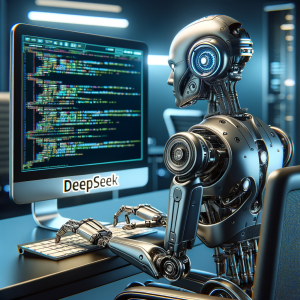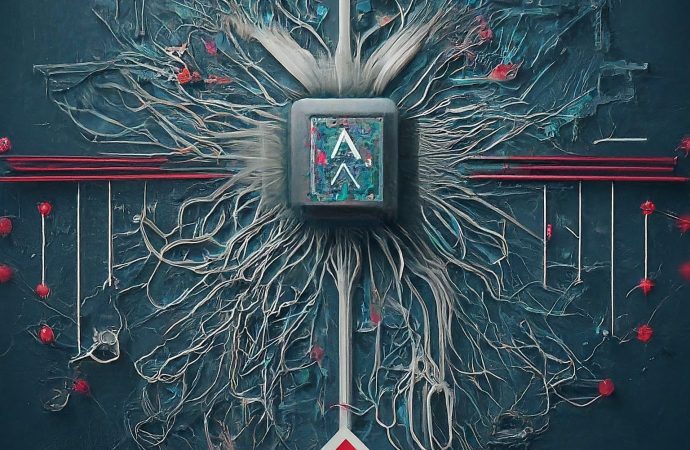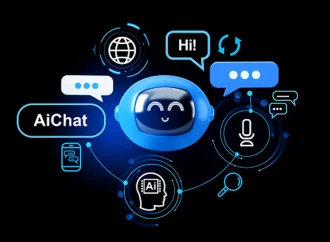The advent of artificial intelligence (AI) and chatbots has revolutionized various sectors globally, including customer service, healthcare, education, and e-commerce. In a country as diverse as India, the challenge of adapting chatbots to cater to its multilingual population is significant. India is home to 22 officially recognized languages and hundreds of dialects, making it a
The advent of artificial intelligence (AI) and chatbots has revolutionized various sectors globally, including customer service, healthcare, education, and e-commerce. In a country as diverse as India, the challenge of adapting chatbots to cater to its multilingual population is significant. India is home to 22 officially recognized languages and hundreds of dialects, making it a unique market for AI-powered chatbots. This article explores the ongoing efforts, challenges, and advancements in the AI industry as it races to adapt chatbots to India’s many languages.
The Multilingual Landscape of India

Picture by: Dalle-3
India’s linguistic diversity presents both opportunities and challenges for AI developers. Hindi and English are the most widely spoken , but there are millions of speakers of languages such as Bengali, Telugu, Marathi, Tamil, Urdu, Gujarati, Kannada, and more. This multilingual landscape means that for AI chatbots to be effective and widely adopted, they must support multiple languages with high accuracy.
The Need for Multilingual Chatbots
The need for multilingual chatbots in India stems from several factors:
- Customer Service: Businesses need to interact with customers in their preferred language to provide personalized and efficient service.
- Digital Inclusion: Multilingual chatbots can bridge the digital divide, enabling non-English speakers to access online services and information.
- Government Services: To ensure the reach of e-governance initiatives, chatbots need to communicate in various regional languages.
- Education and Healthcare: In these critical sectors, language-appropriate AI tools can significantly enhance service delivery and accessibility.
Current Efforts in Multilingual AI Development
Several organizations and tech giants are working on developing multilingual AI solutions. Companies like Google, Microsoft, and Amazon are investing heavily in natural language processing (NLP) and machine learning to enhance their chatbot capabilities in multiple languages.
Google’s AI Initiatives
Google has been at the forefront of developing AI solutions for Indian languages. With the launch of Google Assistant in Hindi and other regional languages, Google has set a benchmark. The company uses advanced machine learning models and large datasets to train its AI systems to understand and respond accurately in different languages.
Microsoft’s AI and Language Understanding
Microsoft’s Azure Cognitive Services offer tools for language understanding that support multiple Indian languages. Microsoft’s approach involves using deep neural networks and transfer learning techniques to improve language models.
Amazon’s Alexa and Local Language Support
Amazon’s Alexa has also expanded its language support to include Hindi and other regional languages. Amazon employs a combination of supervised learning, reinforcement learning, and unsupervised learning to enhance Alexa’s multilingual capabilities.
Challenges in Adapting Chatbots to Indian Languages
Despite significant advancements, several challenges remain in developing multilingual chatbots for India:
- Complex Grammar and Syntax: Indian languages often have complex grammatical structures and syntax, which can be difficult for AI models to process accurately.
- Diverse Dialects and Accents: Variations in dialects and accents within a single language pose additional challenges for creating universally accurate AI models.
- Lack of High-Quality Data: Many Indian languages suffer from a lack of extensive, high-quality datasets required for training AI models.
- Code-Switching: Indian users frequently switch between languages within a single conversation, necessitating chatbots to seamlessly handle code-switching.
Technological Approaches to Overcome Challenges
To address these challenges, several technological approaches are being employed:
Transfer Learning
Transfer learning involves training AI models on large datasets in one language and then fine-tuning them for other . This approach is useful for languages with limited data availability.
Zero-Shot and Few-Shot Learning
These techniques enable AI models to understand and respond in new with little to no additional training data. Zero-shot learning, for instance, allows an AI model to transfer knowledge from known languages to unknown ones.
Multilingual Embeddings
Using multilingual embeddings, where words from different languages are represented in a shared vector space, can improve the ability of AI models to understand and generate text in multiple languages.
Analysis Table: Technological Approaches
| Approach | Description | Benefits | Challenges |
|---|---|---|---|
| Transfer Learning | Using pre-trained models on large datasets and fine-tuning for specific languages | Reduces the need for extensive data in less-resourced languages | Quality depends on the initial dataset |
| Zero-Shot/Few-Shot Learning | Enabling models to work with minimal training data in new languages | Efficient for adding new with limited data | Performance may vary |
| Multilingual Embeddings | Representing words from different languages in a shared vector space | Enhances understanding and generation capabilities across multiple | Requires robust and extensive training |
Comparative Table: Major Players in Multilingual AI for India
| Company | Key Initiatives | Languages Supported | Notable Achievements |
|---|---|---|---|
| Google Assistant, NLP models | Hindi, Bengali, Tamil, more | Extensive language support, high accuracy | |
| Microsoft | Azure Cognitive Services, Deep Neural Networks | Hindi, Tamil, Telugu, more | Advanced language understanding |
| Amazon | Alexa, Supervised and Unsupervised Learning | Hindi, Marathi, more | Seamless integration with devices |
| IBM | Watson Language Translator, AI models | Multiple Indian languages | Industry-specific solutions |
| Multilingual AI research, NLP models | Several Indian languages | Advanced research capabilities |
Future Prospects
The future of multilingual chatbots in India looks promising, with continuous advancements in AI and machine learning. As more data becomes available and AI models become more sophisticated, we can expect chatbots to achieve higher accuracy and fluency in multiple . Additionally, the integration of voice recognition and natural language understanding will further enhance the user experience.
Conclusion
Adapting chatbots to India’s many languages is a complex but essential task for the AI industry. The efforts of tech giants and startups alike are paving the way for more inclusive and accessible AI solutions. By overcoming challenges related to language diversity, grammar complexity, and data availability, the AI industry can create chatbots that cater to the linguistic needs of India’s diverse population, ultimately driving digital inclusion and enhancing service delivery across various sectors.






















